-
 Bitcoin
Bitcoin $117900
0.31% -
 Ethereum
Ethereum $3766
0.28% -
 XRP
XRP $3.176
-0.31% -
 Tether USDt
Tether USDt $1.000
0.00% -
 BNB
BNB $795.6
1.51% -
 Solana
Solana $186.8
-1.09% -
 USDC
USDC $0.9999
-0.01% -
 Dogecoin
Dogecoin $0.2353
-1.33% -
 TRON
TRON $0.3226
1.49% -
 Cardano
Cardano $0.8172
-1.08% -
 Sui
Sui $4.178
3.06% -
 Hyperliquid
Hyperliquid $43.05
-3.39% -
 Stellar
Stellar $0.4367
-0.57% -
 Chainlink
Chainlink $18.62
1.47% -
 Hedera
Hedera $0.2828
6.63% -
 Bitcoin Cash
Bitcoin Cash $584.7
5.65% -
 Avalanche
Avalanche $24.81
2.53% -
 Litecoin
Litecoin $112.8
-0.88% -
 UNUS SED LEO
UNUS SED LEO $8.975
-0.08% -
 Shiba Inu
Shiba Inu $0.00001395
-1.07% -
 Toncoin
Toncoin $3.285
-1.05% -
 Ethena USDe
Ethena USDe $1.001
0.01% -
 Polkadot
Polkadot $4.123
0.76% -
 Uniswap
Uniswap $10.49
-0.18% -
 Monero
Monero $326.5
0.14% -
 Dai
Dai $0.9999
-0.02% -
 Bitget Token
Bitget Token $4.576
0.34% -
 Pepe
Pepe $0.00001247
-1.55% -
 Cronos
Cronos $0.1400
3.77% -
 Aave
Aave $295.1
-0.73%
How to combine the momentum oscillator indicator to capture the high-frequency trading opportunities of the ultra-short line?
Momentum oscillator helps identify high-frequency trading opportunities on the ultra-short line by measuring price change over time, aiding in trend and reversal detection.
Jun 10, 2025 at 05:07 pm
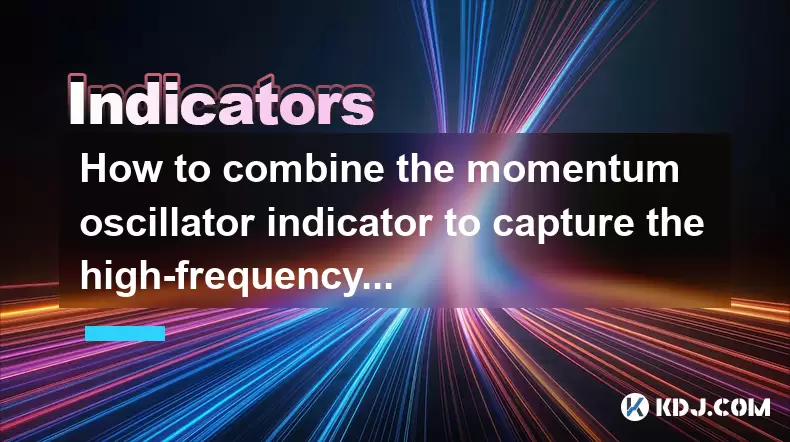
Introduction to Momentum Oscillator Indicator
The momentum oscillator indicator is a popular technical analysis tool used in the cryptocurrency trading community to identify potential price trends and reversals. This indicator measures the rate of change in price over a specified period, helping traders gauge the strength of a trend and potential turning points. By understanding how to effectively use the momentum oscillator, traders can enhance their ability to capture high-frequency trading opportunities on the ultra-short line.
Understanding the Momentum Oscillator
The momentum oscillator calculates the difference between the current closing price and the closing price a certain number of periods ago. The formula for the momentum oscillator is straightforward:
[ \text{Momentum} = \text{Current Closing Price} - \text{Closing Price n Periods Ago} ]
Where n is the chosen period. A positive value indicates upward momentum, while a negative value suggests downward momentum. The key to using this indicator effectively lies in setting the appropriate period and interpreting the results in the context of the overall market.
Setting Up the Momentum Oscillator for Ultra-Short Trading
To set up the momentum oscillator for ultra-short line trading, follow these steps:
- Choose a Trading Platform: Select a platform that supports technical analysis tools, such as TradingView, Binance, or Coinbase Pro.
- Add the Momentum Oscillator: Navigate to the indicators section and add the momentum oscillator to your chart.
- Set the Period: For ultra-short line trading, a shorter period is typically used. A common setting is 14 periods, but you might experiment with 5 or 10 periods to capture more frequent signals.
- Adjust the Chart Settings: Ensure your chart is set to a timeframe that aligns with ultra-short line trading, such as 1-minute or 5-minute candles.
Identifying High-Frequency Trading Opportunities
Once the momentum oscillator is set up, traders can begin to identify high-frequency trading opportunities. Here's how to do it:
- Look for Overbought and Oversold Conditions: The momentum oscillator can help identify when a cryptocurrency is overbought or oversold. Typically, values above a certain threshold (e.g., +100) indicate overbought conditions, while values below a threshold (e.g., -100) suggest oversold conditions.
- Watch for Divergences: Divergences occur when the price action and the momentum oscillator move in opposite directions. A bullish divergence happens when the price makes a lower low, but the momentum oscillator forms a higher low. Conversely, a bearish divergence occurs when the price makes a higher high, but the momentum oscillator forms a lower high.
- Monitor Crossovers: Pay attention to when the momentum oscillator crosses above or below the zero line. A crossover above zero signals increasing momentum, while a crossover below zero indicates decreasing momentum.
Combining Momentum Oscillator with Other Indicators
To enhance the effectiveness of the momentum oscillator for ultra-short line trading, consider combining it with other technical indicators. Here are some complementary tools:
- Moving Averages: Use moving averages to confirm trends identified by the momentum oscillator. For instance, if the momentum oscillator indicates upward momentum and the price is above a short-term moving average, it strengthens the bullish signal.
- Relative Strength Index (RSI): The RSI is another momentum oscillator that can help confirm overbought and oversold conditions. If both the momentum oscillator and RSI indicate overbought or oversold conditions, it provides a stronger signal.
- Bollinger Bands: Bollinger Bands can help identify volatility and potential price breakouts. When the momentum oscillator signals a strong move and the price breaks out of the Bollinger Bands, it can indicate a high-frequency trading opportunity.
Practical Example of Using Momentum Oscillator for Ultra-Short Trading
Let's walk through a practical example of using the momentum oscillator to capture a high-frequency trading opportunity on the ultra-short line:
- Scenario: You're monitoring Bitcoin (BTC) on a 1-minute chart with a momentum oscillator set to 10 periods.
- Observation: The price of BTC has been trending upwards, and the momentum oscillator is hovering around +50.
- Signal: Suddenly, the momentum oscillator spikes to +150, indicating a strong upward momentum.
- Action: You decide to enter a long position, expecting the price to continue rising.
- Confirmation: You notice that the price is also above a 10-period moving average, confirming the bullish trend.
- Exit Strategy: You set a take-profit order at a reasonable resistance level and a stop-loss order just below the recent low to manage risk.
Fine-Tuning Your Strategy
To maximize the effectiveness of using the momentum oscillator for ultra-short line trading, consider the following tips:
- Backtest Your Strategy: Use historical data to test your strategy and refine your settings. This helps you understand how the momentum oscillator performs under different market conditions.
- Adjust Periods: Experiment with different periods for the momentum oscillator to find the setting that works best for your trading style and the specific cryptocurrency you're trading.
- Stay Disciplined: Stick to your trading plan and avoid making impulsive decisions based on short-term fluctuations in the momentum oscillator.
- Monitor Volume: Volume can provide additional confirmation for signals generated by the momentum oscillator. High volume during a momentum spike can indicate stronger conviction behind the price move.
Frequently Asked Questions
Q: Can the momentum oscillator be used for all cryptocurrencies?
A: Yes, the momentum oscillator can be applied to any cryptocurrency. However, the effectiveness may vary depending on the liquidity and volatility of the specific cryptocurrency. More liquid and volatile assets tend to provide clearer signals.
Q: How often should I check the momentum oscillator for ultra-short line trading?
A: For ultra-short line trading, it's advisable to monitor the momentum oscillator continuously, especially during active trading hours. Set up alerts for key levels and crossovers to stay informed without constantly watching the charts.
Q: Is the momentum oscillator suitable for beginners?
A: While the momentum oscillator is relatively straightforward, it requires an understanding of technical analysis and market dynamics. Beginners should start with a demo account to practice using the indicator before trading with real money.
Q: Can the momentum oscillator be used in combination with fundamental analysis?
A: Yes, while the momentum oscillator is a technical tool, it can be used alongside fundamental analysis. For instance, if a cryptocurrency has strong fundamentals and the momentum oscillator indicates a buying opportunity, it could reinforce a long-term investment decision.
Disclaimer:info@kdj.com
The information provided is not trading advice. kdj.com does not assume any responsibility for any investments made based on the information provided in this article. Cryptocurrencies are highly volatile and it is highly recommended that you invest with caution after thorough research!
If you believe that the content used on this website infringes your copyright, please contact us immediately (info@kdj.com) and we will delete it promptly.
- Cryptos to Watch in 2025: Punisher Coin, Chainlink, and the Altcoin Arena
- 2025-07-27 18:30:13
- Bitcoin, Altcoins, Rebound: Navigating the Crypto Comeback Trail
- 2025-07-27 18:30:13
- Ethereum, Bitcoin, and Altcoins: A Shift in Crypto Tides?
- 2025-07-27 19:10:13
- Windtree Therapeutics' Bold BNB Strategy: A $520 Million Crypto Play
- 2025-07-27 19:10:13
- Solana, Staking, and Unilabs: What's the Buzz in the Crypto Space?
- 2025-07-27 16:50:13
- VeChain, HBAR, Remittix: Navigating the Crypto Landscape in 2025
- 2025-07-27 17:10:12
Related knowledge
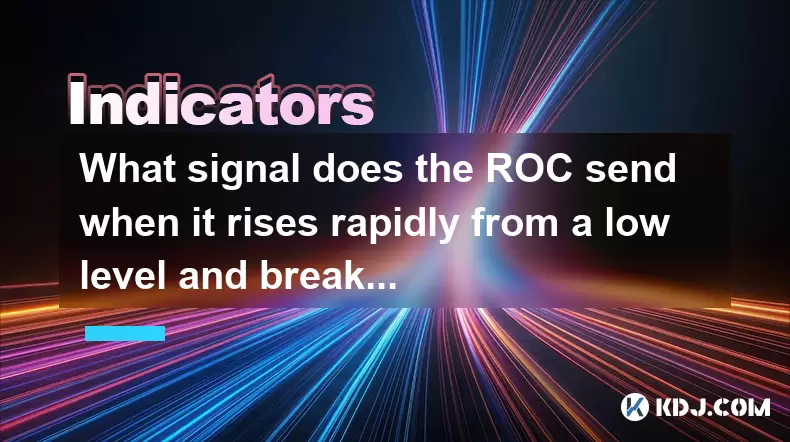
What signal does the ROC send when it rises rapidly from a low level and breaks through the zero axis?
Jul 27,2025 at 10:15am
Understanding the Rate of Change (ROC) IndicatorThe Rate of Change (ROC) is a momentum-based oscillator used in technical analysis to measure the perc...
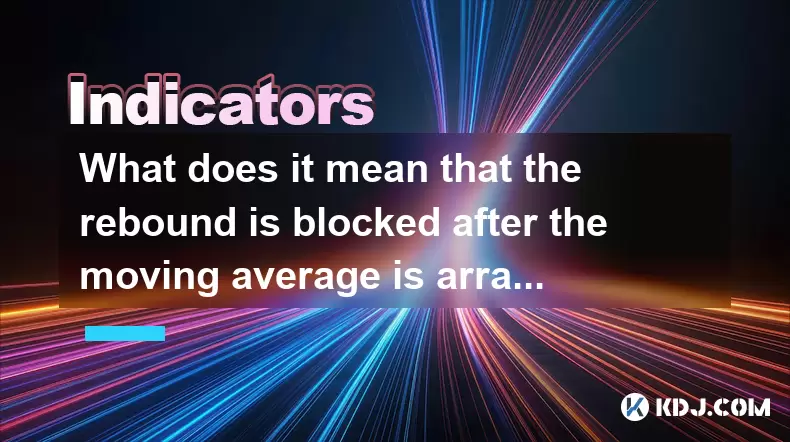
What does it mean that the rebound is blocked after the moving average is arranged in a short position for the first time?
Jul 26,2025 at 10:51am
Understanding the Short-Term Moving Average ConfigurationWhen traders refer to a 'short position arrangement' in moving averages, they are describing ...
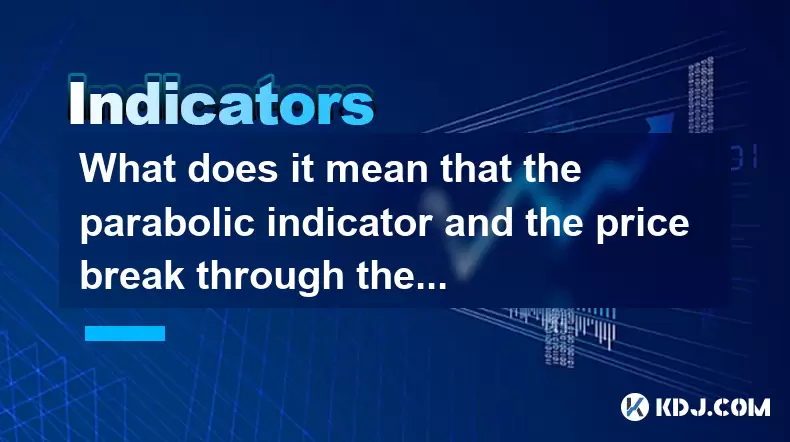
What does it mean that the parabolic indicator and the price break through the previous high at the same time?
Jul 26,2025 at 07:22pm
Understanding the Parabolic Indicator (SAR)The Parabolic SAR (Stop and Reverse) is a technical analysis tool developed by J. Welles Wilder to identify...
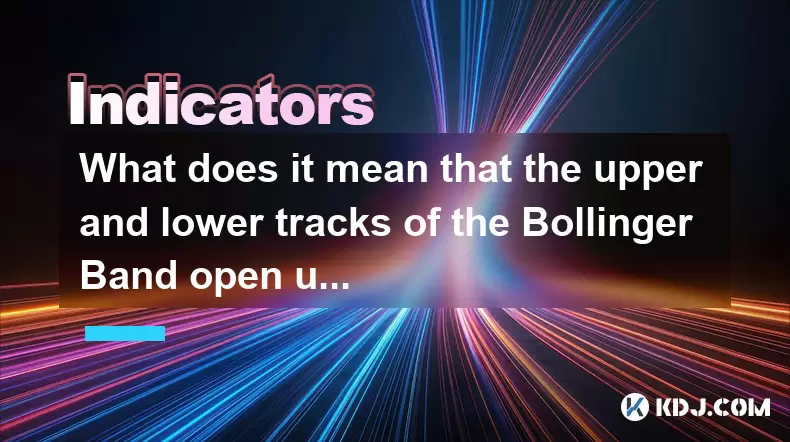
What does it mean that the upper and lower tracks of the Bollinger Band open upward at the same time?
Jul 27,2025 at 02:49pm
Understanding the Bollinger Band StructureThe Bollinger Band is a widely used technical analysis tool developed by John Bollinger. It consists of thre...
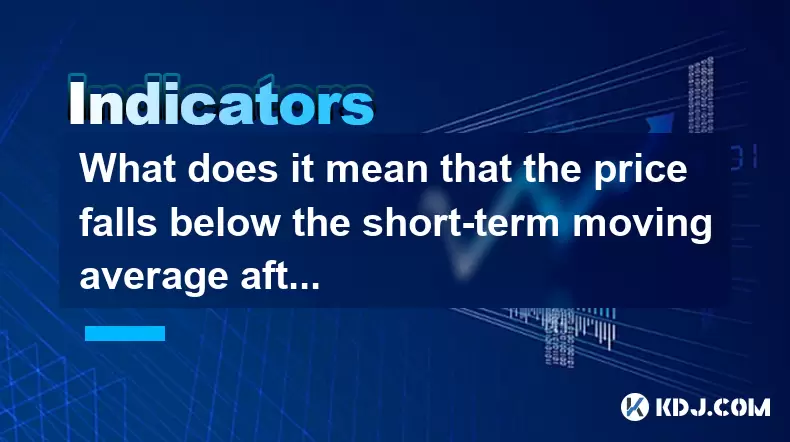
What does it mean that the price falls below the short-term moving average after the RSI top divergence?
Jul 26,2025 at 11:01pm
Understanding RSI Top Divergence in Cryptocurrency TradingThe Relative Strength Index (RSI) is a momentum oscillator widely used in cryptocurrency tra...
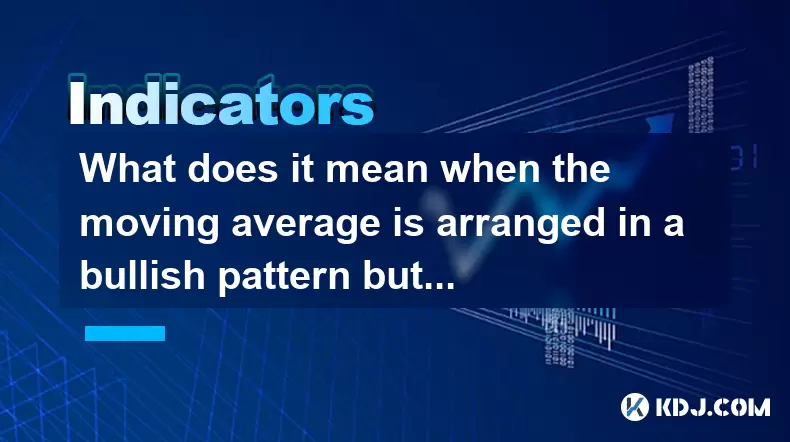
What does it mean when the moving average is arranged in a bullish pattern but the MACD bar is shortened?
Jul 27,2025 at 06:07am
Understanding the Bullish Moving Average PatternWhen traders observe a bullish moving average pattern, they typically refer to a configuration where s...

What signal does the ROC send when it rises rapidly from a low level and breaks through the zero axis?
Jul 27,2025 at 10:15am
Understanding the Rate of Change (ROC) IndicatorThe Rate of Change (ROC) is a momentum-based oscillator used in technical analysis to measure the perc...

What does it mean that the rebound is blocked after the moving average is arranged in a short position for the first time?
Jul 26,2025 at 10:51am
Understanding the Short-Term Moving Average ConfigurationWhen traders refer to a 'short position arrangement' in moving averages, they are describing ...

What does it mean that the parabolic indicator and the price break through the previous high at the same time?
Jul 26,2025 at 07:22pm
Understanding the Parabolic Indicator (SAR)The Parabolic SAR (Stop and Reverse) is a technical analysis tool developed by J. Welles Wilder to identify...

What does it mean that the upper and lower tracks of the Bollinger Band open upward at the same time?
Jul 27,2025 at 02:49pm
Understanding the Bollinger Band StructureThe Bollinger Band is a widely used technical analysis tool developed by John Bollinger. It consists of thre...

What does it mean that the price falls below the short-term moving average after the RSI top divergence?
Jul 26,2025 at 11:01pm
Understanding RSI Top Divergence in Cryptocurrency TradingThe Relative Strength Index (RSI) is a momentum oscillator widely used in cryptocurrency tra...

What does it mean when the moving average is arranged in a bullish pattern but the MACD bar is shortened?
Jul 27,2025 at 06:07am
Understanding the Bullish Moving Average PatternWhen traders observe a bullish moving average pattern, they typically refer to a configuration where s...
See all articles

























































































